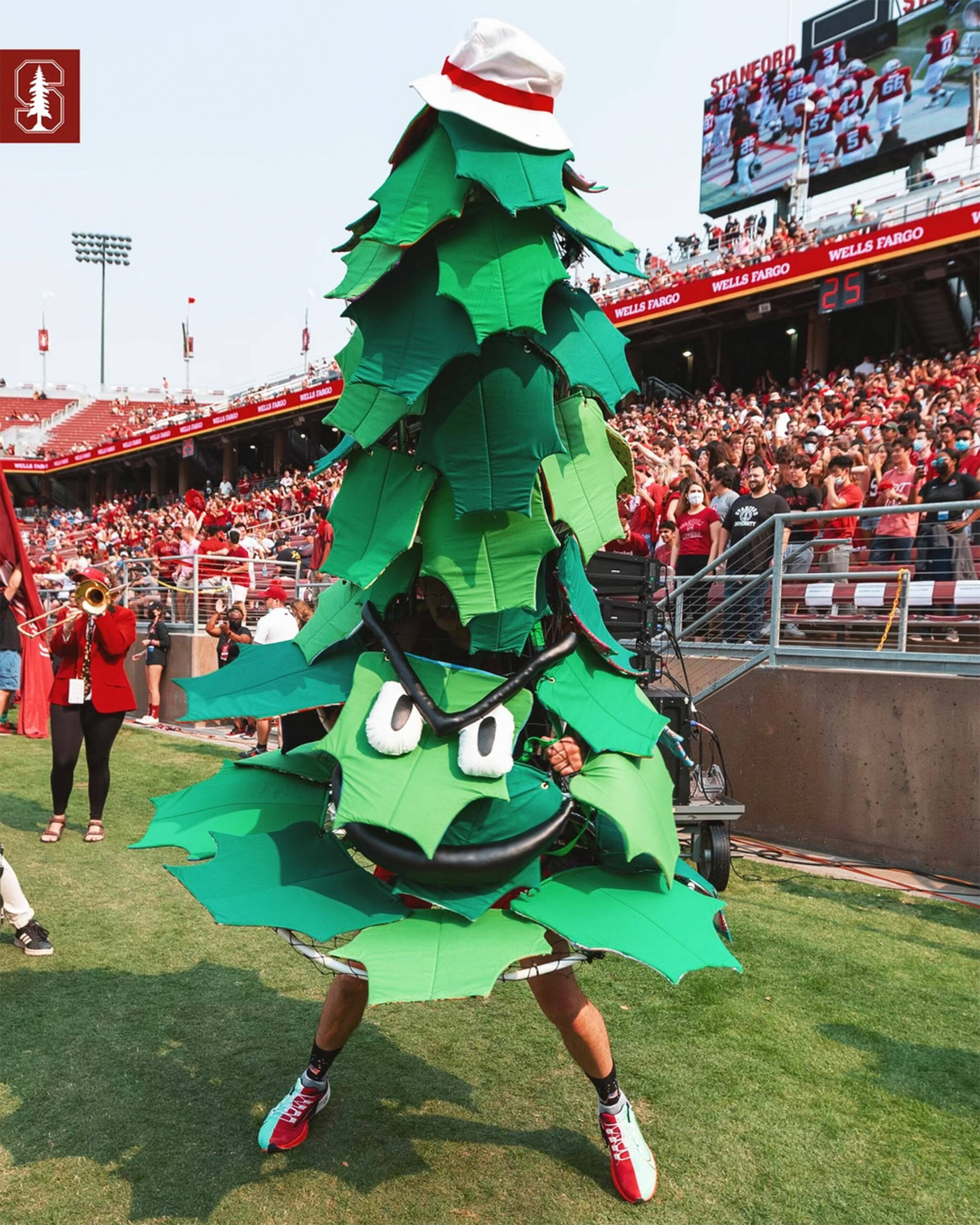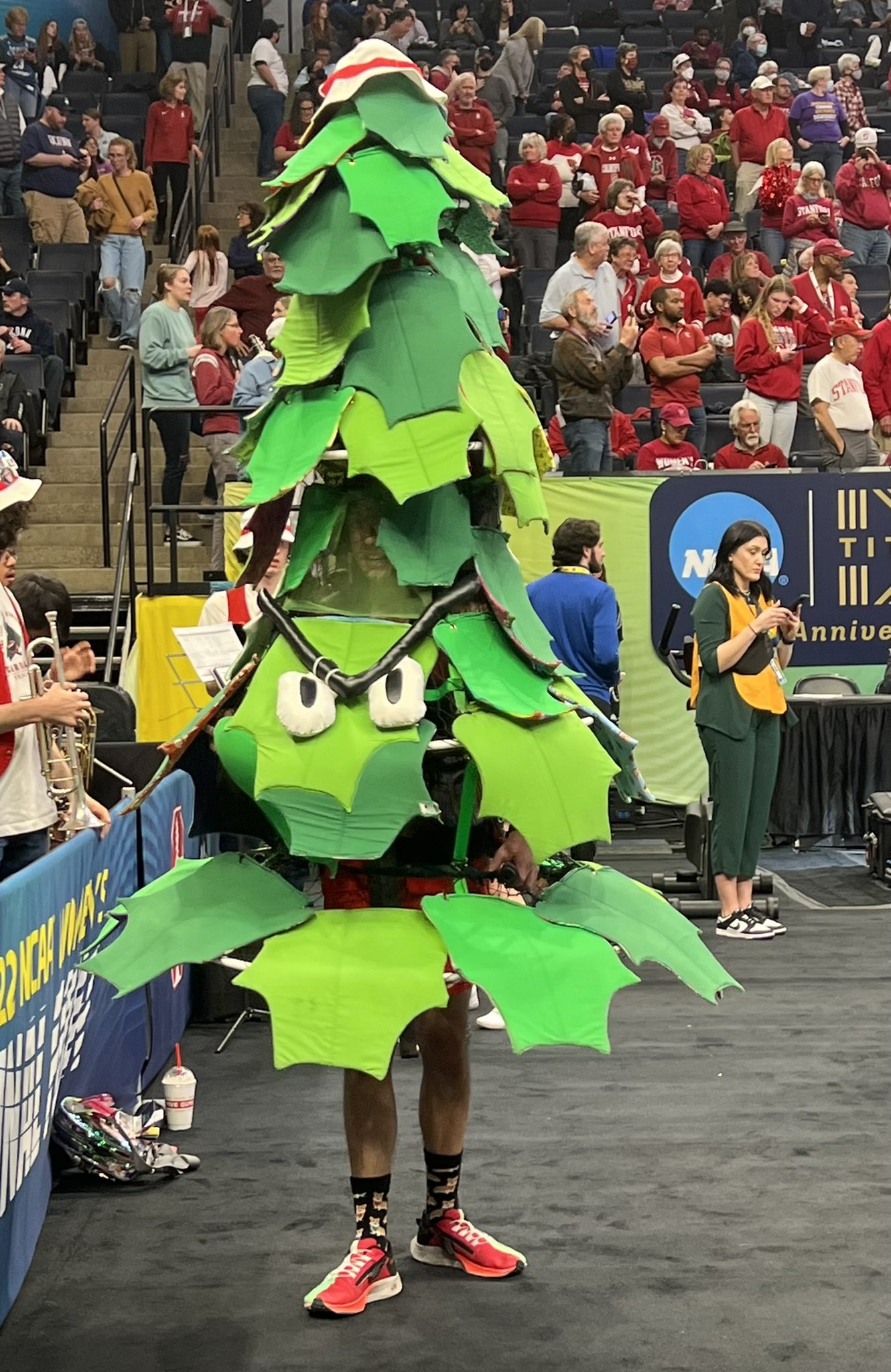Ever wondered what the mascot of Stanford is? Well, buckle up, because we're diving deep into the world of Stanford's legendary symbol that represents the heart and soul of this prestigious university. From its rich history to its cultural significance, we'll uncover everything you need to know about Stanford's beloved mascot. So, are you ready to join the Cardinal craze?
Let’s be honest here, mascots are more than just fun characters at sporting events. They’re the embodiment of a school's identity, values, and spirit. Stanford’s mascot is no exception. It carries the weight of tradition, pride, and a whole lot of school spirit that makes Stanford University stand out in the world of academia and athletics.
In this article, we’ll explore the origins, controversies, and everything in between that makes Stanford’s mascot a topic worth discussing. Whether you're a Cardinal fan, a prospective student, or just someone curious about college mascots, you're in for a treat!
- Top Ten Hot Male Actors Your Ultimate Guide To Hollywoods Hottest Talents
- 1101 W Mckinley Avenue Pomona Ca Your Ultimate Guide To This Iconic Location
Stanford's Mascot: A Quick Overview
Stanford's mascot is officially known as the Stanford Tree. Yep, you heard that right—a tree! But not just any tree, this is a tree with serious attitude and a whole lot of personality. The Stanford Tree represents the El Palo Alto tree, a historic redwood located near the university’s campus.
Now, you might be wondering why a tree? Well, the story behind it is as fascinating as the mascot itself. The Stanford Tree wasn’t always the official mascot. In fact, it emerged from a series of events that shaped its iconic status over the years. Stick around, and we’ll spill all the juicy details.
Why a Tree? The Unique Story Behind Stanford's Mascot
Back in the day, Stanford’s unofficial mascot was the Indian, a symbol that represented the university’s early years. However, as times changed, so did the perception of this mascot. In 1972, the university officially retired the Indian mascot due to sensitivity concerns. Enter the Stanford Tree, which quickly became the fan-favorite replacement.
- Maggie Sajack The Rising Star Everyonersquos Talking About
- How Many Calories In Zaxbys Chicken Finger Plate A Deep Dive
The Stanford Tree is not your ordinary tree. It’s a costumed character that often performs at football games, basketball games, and other university events. With its quirky antics and energetic performances, the Tree has become a beloved figure in the Stanford community.
Biography of Stanford's Mascot
Let’s take a closer look at the life and times of Stanford’s iconic mascot. Below is a table summarizing some key details about the Stanford Tree:
| Name | Stanford Tree |
|---|---|
| Symbol | El Palo Alto Tree |
| Adopted | 1972 (as the official mascot) |
| Colors | Cardinal and White |
| Significance | Represents Stanford’s history and school spirit |
As you can see, the Stanford Tree is more than just a mascot—it’s a symbol of Stanford’s rich heritage and commitment to inclusivity.
Stanford Tree vs. Other College Mascots
So, how does the Stanford Tree stack up against other college mascots? Let’s break it down:
- Uniqueness: The Stanford Tree is one of the most unique mascots in college sports. While other schools go for fierce animals or mythical creatures, Stanford opted for a tree. Talk about standing out!
- Popularity: Despite its unconventional choice, the Stanford Tree is incredibly popular among students, alumni, and fans. It even won the Capital One National Mascot of the Year award in 2005 and 2013.
- Cultural Impact: The Tree has become a cultural icon, representing not just Stanford but also the broader conversation around mascots and their significance in college sports.
History of Stanford's Mascots
Before the Stanford Tree became the official mascot, Stanford had a few other symbols that represented the university. Let’s take a trip down memory lane:
1891-1930: The Indians – In the early years, Stanford’s athletic teams were known as the Indians. This nickname was inspired by the university’s location in the "Valley of the Hearts Delight," which was once home to Native American tribes. However, as societal attitudes evolved, the use of Native American imagery as a mascot became controversial.
1930-1972: The Cardinal – After retiring the Indians nickname, Stanford adopted "Cardinal" as its official team name. This referred to the university’s deep red color, which has been a symbol of Stanford since its founding.
1972-Present: The Stanford Tree – The Stanford Tree emerged as the unofficial mascot during the 1970s and was eventually embraced by the university as the official mascot. Its quirky personality and connection to the historic El Palo Alto tree make it a perfect fit for Stanford’s identity.
The Evolution of Stanford's Mascot
Over the years, the Stanford Tree has evolved in both appearance and role. Initially, it was just a fun character at sporting events, but it has since become a symbol of Stanford’s commitment to inclusivity and community. Here’s how:
- Design Changes: The Tree’s costume has undergone several redesigns to make it more vibrant and engaging.
- Community Engagement: The Tree is now involved in more than just sports events. It participates in campus activities, charity events, and even virtual appearances during the pandemic.
- Global Recognition: The Stanford Tree has gained international recognition, appearing in media outlets and even being featured in popular culture.
The Role of the Stanford Tree in University Life
The Stanford Tree isn’t just a mascot—it’s a key player in the university’s culture and community. Here are some of the ways the Tree contributes to Stanford’s vibrant atmosphere:
1. Sports Events: The Tree is a staple at football and basketball games, entertaining crowds with its energetic performances and witty antics. Whether it’s dancing, cheering, or interacting with fans, the Tree keeps the spirit alive.
2. Campus Traditions: The Tree participates in various campus traditions, such as Big Game Week and Gaieties. These events celebrate Stanford’s history and bring the community together.
3. Community Outreach: Beyond campus, the Tree is involved in community outreach programs, charity events, and educational initiatives. It serves as an ambassador for Stanford, spreading positivity and goodwill.
Controversies Surrounding Stanford's Mascot
No mascot is without its controversies, and the Stanford Tree is no exception. Here are a few key points of debate:
- Uniqueness vs. Tradition: Some people question whether the Tree is too unconventional compared to traditional mascots like animals or historical figures. However, supporters argue that its uniqueness is precisely what makes it special.
- Costume Design: Over the years, there have been debates about the Tree’s costume design, with some suggesting it could be more refined or modernized.
- Cultural Sensitivity: While the Tree itself is not controversial, the history of Stanford’s mascots has sparked discussions about cultural sensitivity and the importance of choosing symbols that represent inclusivity.
Stanford Tree Fun Facts
Here are some fun facts about Stanford’s beloved mascot:
- The Stanford Tree is the only tree mascot in NCAA Division I sports.
- It has won multiple National Mascot of the Year awards, cementing its status as one of the best mascots in college sports.
- The Tree is often seen performing stunts, such as riding a bike or playing instruments, during halftime shows.
- There’s an entire student organization dedicated to managing the Tree’s appearances and activities.
Behind the Scenes: Who Plays the Stanford Tree?
Ever wondered who’s behind the mask? The Stanford Tree is played by a group of students known as the Stanford Band. These students volunteer their time to bring the Tree to life, ensuring it’s always ready to entertain and inspire. It’s a fun and rewarding experience that allows students to contribute to the university’s spirit in a unique way.
Stanford Tree in Popular Culture
The Stanford Tree has made appearances in various forms of media, from TV shows to movies. Its quirky personality and distinctive appearance have made it a favorite among filmmakers and advertisers. Here are a few notable appearances:
- ESPN: The Tree has been featured in numerous ESPN broadcasts, often as a highlight of Stanford’s sporting events.
- Social Media: With the rise of platforms like Instagram and TikTok, the Tree has gained a massive following online, where it shares behind-the-scenes content and interacts with fans.
- Pop Culture References: The Tree has been referenced in TV shows, comics, and even memes, proving its widespread appeal.
The Future of Stanford's Mascot
As Stanford continues to grow and evolve, so will its mascot. The Stanford Tree will undoubtedly remain a beloved symbol of the university, but there’s always room for innovation and creativity. Whether it’s new costume designs, expanded roles, or increased community involvement, the Tree’s future looks bright.
Conclusion: Why Stanford's Mascot Matters
So, there you have it—the fascinating story of Stanford’s mascot, the Stanford Tree. From its humble beginnings to its current status as a cultural icon, the Tree represents much more than just a symbol of school spirit. It embodies Stanford’s values of inclusivity, creativity, and community.
We hope this article has given you a deeper appreciation for the Stanford Tree and its role in the university’s rich history. If you enjoyed reading this, feel free to share it with your friends or leave a comment below. And if you’re ever at a Stanford game, be sure to give the Tree a high-five—it’s always ready to spread some Cardinal cheer!
Table of Contents
- Stanford's Mascot: A Quick Overview
- Why a Tree? The Unique Story Behind Stanford's Mascot
- Biography of Stanford's Mascot
- Stanford Tree vs. Other College Mascots
- History of Stanford's Mascots
- The Evolution of Stanford's Mascot
- The Role of the Stanford Tree in University Life
- Controversies Surrounding Stanford's Mascot
- Stanford Tree Fun Facts
- Stanford Tree in Popular Culture
- The Future of Stanford's Mascot
- Zodiac June 14th Unlocking The Mysteries Of Your Birthday Star Sign
- Miley Cyrus Brothers And Sisters A Closer Look Into Her Family Dynamics


